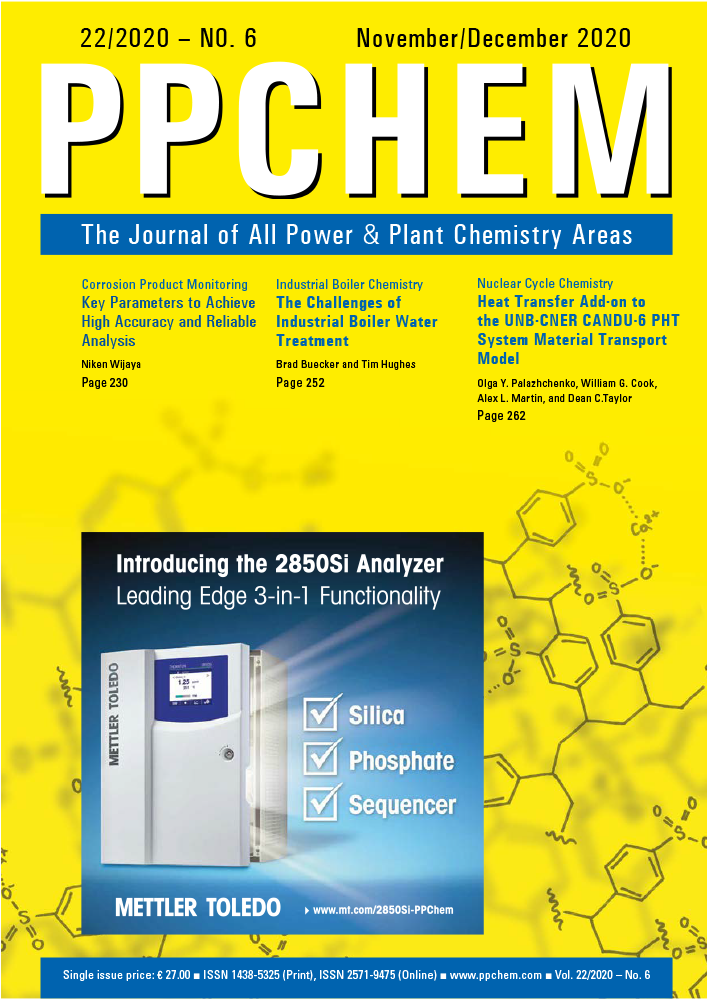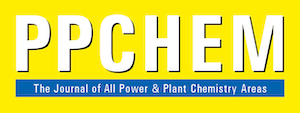
For members only
ABSTRACTS
Corrosion Product Monitoring – Key Parameters to Achieve High Accuracy and Reliable Analysis
Niken Wijaya
Efforts have been made at AGL’s Liddell Power Station, Australia, to determine the best corrosion product monitoring practices in order to establish baseline data that are reliable and accurate. This effort is an outcome of the decision made to apply a film forming product (FFP) at Liddell Power Station, with the goal of minimising corrosion product transport from the boiler feed system to the boiler on all four units until its scheduled closure in 2022. Despite guidelines and studies done on this subject, there are still many knowledge gaps that need to be addressed. This paper aims to evaluate the accuracy of onsite ferrozine and porphyrin analyses for iron and copper analysis and how they compare to external analyses by inductively coupled plasma mass spectroscopy with an octupole reaction cell. This paper also investigates the influence of several key parameters on corrosion product monitoring including the use of an integrated corrosion product sampler, the use of smaller pore filter paper, the forms of corrosion products in the system, and the use of cation paper, which are critical in establishing the best practices for corrosion product monitoring. Liddell’s baseline data on corrosion product were used to evaluate the efficiency of the current cycle chemistry program and to verify the need for FFP dosing for corrosion protection.
PPCHEM® 2020, 22(6), 230–250
For Members only
The Challenges of Industrial Boiler Water Treatment
Brad Buecker and Tim Hughes
High-pressure steam generators for power production require high-purity makeup and feedwater and controlled boiler water chemistry to minimize corrosion and scale formation in the boilers, superheater/reheater circuits, and turbines. Numerous articles in the PPCHEM® journal over the last two decades have outlined these chemistries and their evolution.
However, while many heavy industries have high-pressure steam generators for cogeneration needs, these plants and many other smaller facilities also have low-pressure boilers that produce process steam. The lower heat fluxes and pressures in these steam generators somewhat alleviate the stringent treatment requirements necessary for highpressure units but offer more complexity in the choice of optimum treatment methods.
This article provides an overview of modern methods for protecting lower-pressure steam generators from factors that typically do not plague their high-pressure counterparts.
PPCHEM® 2020, 22(6), 252–259
For Members only
Heat Transfer Add-on to the UNB-CNER CANDU-6 PHT System Material Transport Model
Olga Y. Palazhchenko, William G. Cook, Alex L. Martin, and Dean C. Taylor
Reduced heat transfer in steam generators has safety consequences such as the risk of fuel dryout due to increasing reactor inlet header temperature (RIHT). To maintain the RIHT within the safe operating envelope, it is necessary to model factors that contribute to its rise, including chemical processes such as corrosion product transport and deposition and mechanical effects such as component degradation.
In the recent add-on to the UNB-CNER PHT Corrosion Product and Activity Transport Code, a combination of heat transfer mechanisms, updated thermodynamic equations for the properties D2O and H2O, station data, and the existing model capability of predicting primary-side material transport are used to create and optimize a one-dimensional simulation of a typical CANDU-6 boiler. Data from Point Lepreau Nuclear Generating Station is used to benchmark various model parameters, allowing for predictive simulations, where RIHT trends can be forecasted into the future using desired outage and boiler cleaning schedules.
PPCHEM® 2020, 22(6), 262–273

